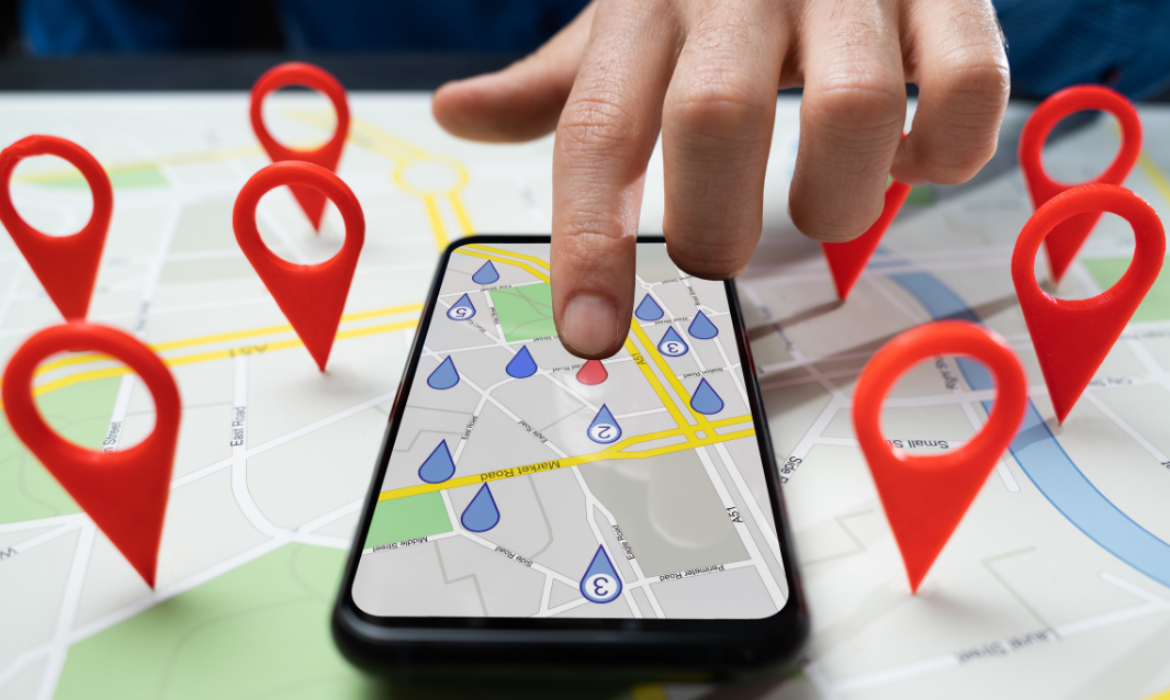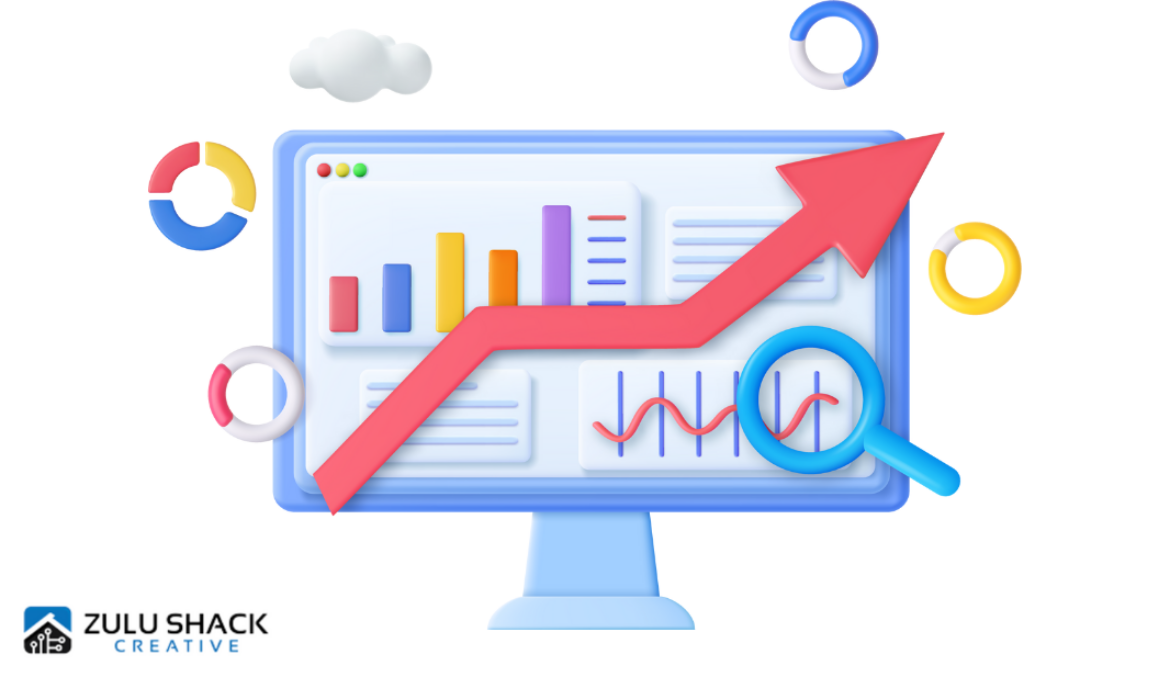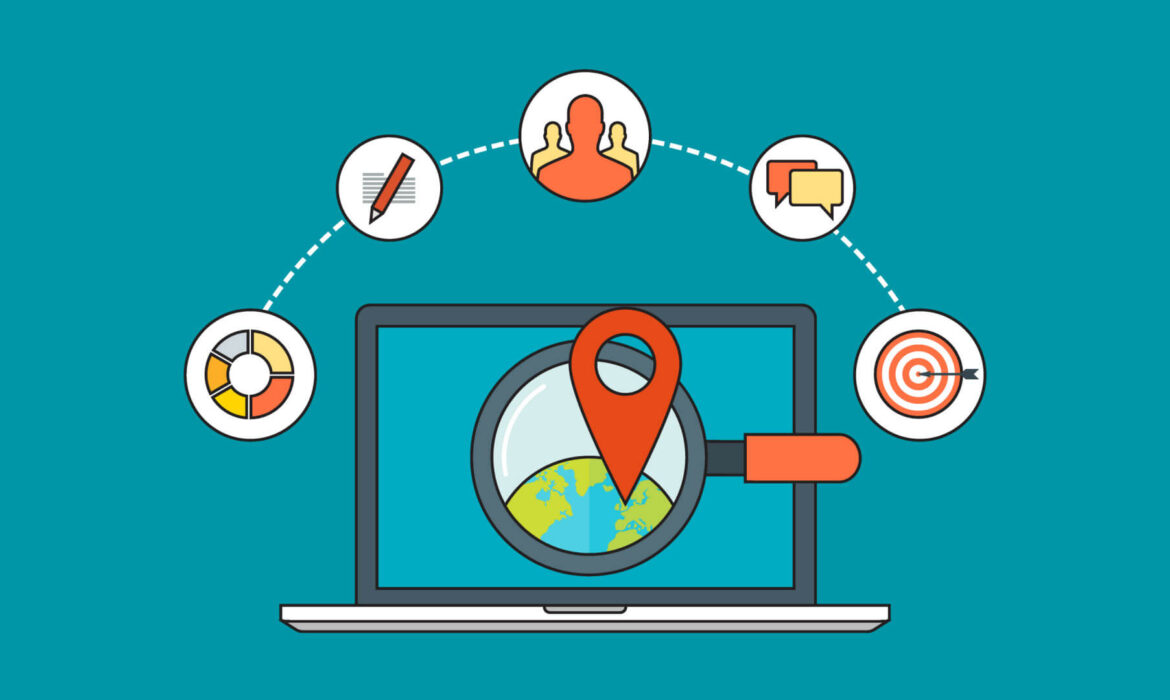5 Strategies to Improve Your Google Rating in 2024

In the vast landscape of the internet, where billions of websites compete for attention, mastering the art of Google ranking is essential for standing out. Google is not able to judge content the way you and I do; it’s a meticulously designed algorithm fueled by code and mathematics. Understanding how this digital behemoth operates is the first step towards optimizing your content and climbing the search result ladder. So, it’s time to dive into the actions and strategies that will help you with your search engine optimization in 2024. Buckle up!
For additional information on services or advice relating to Search Engine Optimization (SEO), web development, and app building, be sure to check out Zulu Shack’s main site!
Key Takeaways:
- Google’s assessment of content quality encompasses various aspects, including relevance, authority, user experience, engagement metrics, freshness, structured data usage, and accessibility standards adherence.
- Google utilizes metrics like bounce rate and time spent on page to gauge user satisfaction with content. While these metrics are important, they’re not always definitive indicators, and Google’s algorithms consider multiple signals for accurate judgments.
- To enhance content visibility on Google and ultimately increase your Google ranking, focus on user intent, incorporate key takeaways for quick understanding, optimize readability, include clear calls-to-action, prioritize site speed, and utilize relevant keywords in titles and descriptions.
How Does Google Determine Quality Of Content?

Google’s primary mission is to cater to the needs of its users. Every tweak to its algorithm aims to enhance the search experience by delivering the most relevant and valuable content. Consequently, to boost your Google ranking, you must align your content with the user-centric criteria that Google values.
Naturally, this leads us to the question: what user-centric criteria and algorithms does Google use exactly? Google uses a variety of algorithms and methods to determine if the content on the web is high quality. While the exact details of these algorithms are proprietary and not disclosed by this search engine, they generally aim to assess the relevance, authority, and user satisfaction of content. Here are some factors that Google considers:
- User Interaction
- Website Authority
- Goal Delivery
- Informational Queries
- Quick Calls-to-Action
- Click-Through Rates
Google’s ranking methodology centers around analyzing user interaction to assess content relevance and usefulness. Crafting resonant content that promptly fulfills audience needs is vital. To ascend in Google’s ranking hierarchy, your content must also prioritize goal completion. You can entice users with intriguing titles and concise descriptions, which will increase the likelihood of clicks and enhance your visibility on Google.
Whether it’s answering a query, providing information, or offering a solution, clarity and conciseness are paramount. Google also considers user experience factors like page loading speed, mobile-friendliness, and ease of navigation, while avoiding intrusive ads. These elements contribute to a website’s authority, along with backlinks from reputable sources.
To enhance your site’s ranking, prioritize accurate, comprehensive, and original content. By strategically placing quick call-to-actions (CTAs) throughout your content, you can streamline the user journey and encourage goal completion. Furthermore, prioritize optimizing site speed. A seamless and responsive browsing experience not only enhances user satisfaction and increases click-through rates but also positively influences your Google ranking.
In the intricate ecosystem of Google ranking, mastering the nuances of user interaction and optimization techniques is essential for success. By prioritizing user satisfaction, delivering valuable content, and optimizing for engagement, you can elevate your Google ranking and establish a formidable online presence. The key to success: Embrace the algorithms, understand the metrics!
If you’re new to SEO, I’d highly recommend reading the following blog where you can delve deeper into link-building, backlinks, and some of the other terms discussed in this blog.
What Does Google Consider Bad-Quality Content?
Now that we understand what Google considers high-quality content, it’s time to ask the latter: What does Google consider bad-quality content? In other words, we need to understand what Google deems as bad-quality content to ensure we avoid potential pitfalls that could harm our website’s ranking. Examples of the following include:
- Thin Content
- Keyword Stuffing
- Duplicate Content
- Spammy Links
Thin content, which lacks substance and offers little value to users, does not contribute to goal completion by any means–it actually does the opposite. More so, keyword stuffing, another frowned-upon practice, involves overloading content with keywords to manipulate search engine rankings. Lastly, replicating content from other sources without adding value and including links to unrelated or spammy websites solely for ranking purposes, or presenting different content to search engines than what users see are all frowned upon. To maintain a positive reputation with Google and improve your website’s ranking, it’s essential to focus on creating high-quality, user-centric content that prioritizes relevance, value, and authenticity while adhering to Google’s quality guidelines.
If you’re new to SEO, I’d highly recommend reading the following blog where you can delve deeper into key terms discussed in this blog, as well as learn the proper etiquette and unspoken rules of SEO.
5 Actionable Steps to Improve Your Google Ranking:

Now that we’ve established a basis of understanding, a series of do’s and don’ts, we can finally delve into the five actionable steps that you can take today to enhance your site’s Google ranking and establish a strong online presence. From optimizing on-page elements to creating high-quality content and building authoritative backlinks, these strategies will empower you to elevate your site’s SEO performance and achieve lasting success in the competitive digital world.
(1) Optimize On-Page SEO: Enhance your website’s visibility in search results by optimizing on-page elements such as titles, meta descriptions, headers, and URL structures. Incorporate relevant keywords naturally throughout your content and ensure it is well-structured and easy to navigate. Additionally, optimize images with descriptive alt tags to improve accessibility and keyword relevance. To learn more about creating a professional and successful website, make sure to read our blog on web design!
(2) Create High-Quality Content: This step cannot be emphasized enough! Creating high-quality content is the number one way to improve your SEO and online presence. Produce engaging, informative, and valuable content that addresses the needs and interests of your target audience. Focus on providing solutions, answering questions, and offering unique insights to establish your site as a reputable source of information. Regularly update your content to keep it fresh and relevant, and aim for a good balance of text, images, and multimedia elements to enhance user engagement. For more tips on outlining and creating quality content, be sure to check out this article here!
(3) Build Quality Backlinks: Earn backlinks from authoritative and relevant websites within your industry or niche to improve your site’s credibility and authority in the eyes of Google. Focus on obtaining natural and organic backlinks through guest blogging, outreach campaigns, and networking with influencers. Avoid low-quality or spammy backlinks, as they can have a negative impact on your ranking.
(4) Improve Website Speed and Performance: Enhance user experience and reduce bounce rates by optimizing your website’s speed and performance. Compress images, minify CSS and JavaScript files, enable browser caching, and utilize content delivery networks (CDNs) to speed up page loading times. Mobile optimization is also crucial, as Google prioritizes mobile-friendly websites in its ranking algorithm.
(5) Monitor and Analyze Performance: Regularly track your site’s performance using tools like Google Analytics and Google Search Console to identify areas for improvement and track progress over time. Monitor key metrics such as organic traffic, bounce rate, average session duration, and keyword rankings to gauge the effectiveness of your SEO efforts. Use this data to refine your strategy, address any issues, and capitalize on opportunities to further enhance your site’s Google ranking.
By implementing these actionable steps consistently and strategically, you can improve your site’s visibility, attract more organic traffic, and ultimately boost your Google ranking. Remember that SEO is an ongoing process, and staying informed about algorithm updates and industry trends is essential for long-term success.
Full Summary:
Mastering the intricacies of content quality evaluation by Google is paramount for any website aiming to excel in today’s digital landscape. By grasping the multifaceted factors that contribute to content assessment, from relevance and authority to user experience and engagement metrics, websites can refine their strategies to meet Google’s standards effectively. Moreover, recognizing and avoiding practices that lead to low-quality content is essential for maintaining credibility and relevance in the eyes of both users and search engines. With a clear understanding of these SEO practices and a commitment to delivering valuable, user-centric content, websites can position themselves for sustained success and increased visibility in Google’s search results.
You too can succeed in achieving a high Google ranking by implementing these proven strategies and guidelines. By focusing on delivering valuable, user-centric content and adhering to SEO best practices, you can enhance your website’s visibility and attract more organic traffic. With dedication and perseverance, you can elevate your online presence and reach a wider audience, ultimately driving growth and success for your website or business.
Frequently Asked Questions
Is it true that Google penalizes websites for excessive monetization or pushy calls to action?
Contrary to common belief, Google doesn’t necessarily penalize websites for monetization efforts or assertive calls to action. Many e-commerce websites rank highly in SERPs despite employing such tactics. However, balancing monetization with providing valuable content and a positive user experience is essential.
How important is user intent in Google’s ranking criteria?
User intent plays a crucial role in determining content quality from Google’s perspective. Content that effectively satisfies user queries and provides valuable information aligned with user intent is more likely to rank well. Therefore, understanding and addressing user intent is essential for SEO success in 2024.
What are the key factors Google considers when determining content quality?
Google evaluates content based on relevance to the search query, authority of the website or page, user experience factors like page loading speed and mobile-friendliness, content quality including accuracy and originality, engagement metrics such as click-through rate and time spent on page, freshness for timely topics, structured data usage, and accessibility standards adherence.
How does Google identify bad-quality content?
Google assesses user satisfaction by analyzing interaction metrics like bounce rate and time spent on page. If users quickly return to the search results after visiting a page, it may signal dissatisfaction. However, this isn’t always definitive, as some users might find what they need quickly and exit, so Google’s algorithms consider various signals to make judgments.
What strategies can I use to improve my content’s ranking on Google in 2024?
To enhance content visibility on Google, focus on goal completion, incorporate key takeaways for quick understanding, optimize readability with font styling, include clear call-to-actions, not overly worry about bounce rate, avoid clickbait titles, prioritize site speed, organize content with a table of contents, and utilize relevant keywords in titles and descriptions.
The Top 7 SEO Tools Every Local Business Needs in 2024
In certain professions, relying solely on your individual resourcefulness, physical prowess, or drive may suffice; however, search engine optimization(SEO) and digital marketing do not fall into that category. In this industry, success often hinges on a combination of strategic thinking, technical skills, and adaptability, making it essential to leverage specialized tools and resources. At this point you may be asking yourself: As a local business owner, how will I be able to achieve my online marketing goals without the experience and technical knowledge of professionals? Great question! Well, out of the dozens and dozens of options out there, I’ve devised a list of user-friendly and helpful SEO tools that I think are the best for helping local businesses achieve their online marketing goals.
What is an SEO Tool?
To start, let’s make sure we understand what SEO tools actually are. An SEO tool can be defined as a software or online platform designed to improve some aspect of search engine optimization, such as online visibility and ranking on search engines like Google. Widely used by online marketers and SEO professionals, SEO tools offer a range of features that serve various purposes, such as search query analytics, reporting automation, content optimization, website performance analysis or audits, and so much more.
What Makes a Good SEO tool?
As a local business owner, your time and resources are finite. Thus, it is clear that you are in need of an easy and effective SEO tool, but what exact characteristics make an SEO tool “good” or useful? What makes a “good” SEO tool for your business may differ from what would be considered a “good” SEO tool for professional SEO marketers, let’s say; however, there are some basic parameters we can use to determine the value of SEO tools. If you are unsure if a SEO tool is right for your business needs, ask yourself if the following characteristics are existent: (1) SEO-centric functionality, (2) value, (3), user-friendly, (4) integrated platforms. Now, what does this all mean? SEO-centric functionality means that every SEO tool should have an element that relates back to search engine optimization. This is step one–if your SEO tool of choice does not actually relate to any elements of SEO (i.e. keyword analysis, audit tools, on-page performance assessment, competitor analysis, etc.), you should probably look for another option. Secondly, if your SEO tool of choice requires a subscription, does the price equate to the quality of the product and its services? In this blog, I will offer some SEO tools that are free; however, the majority are not, so it is important to be able to properly gauge if the tools offered are extensive and comprehensive enough to warrant the subscription price. Although it ranks third on the list, this characteristic holds significant importance nonetheless. User experience and friendliness should be of your top considerations for SEO tools. Keep in mind that there will be a learning curve with all of the below noted SEO tools–as there is for everyone, SEO professionals and local business owners alike–but that learning curve should be relatively low so users are able to access features they need, as well as seamlessly integrate these tools into their performance1. Lastly, a key characteristic of a good and useful SEO tool is its ability to be integrated into other software products. To further elaborate, users should be able to integrate the offered SEO tools and features into their common-place business platforms that already exist, such as platforms relating to tasks like meetings, reporting, scheduling, and customer management.
The Top 7 SEO Tools for Local Businesses in 2024:
The following list was curated with the local business in mind. The listed SEO tools have been chosen because they are user-friendly and easy to navigate, with a minimal learning curve and no technical skills required. Also, keep in mind that in order to see meaningful progress via these SEO tools, there should be continuous effort put forth and monitoring in place to ensure long-term improvement in your business’s SEO2. Remember, a SEO tool is only as great as the effort you invest in utilizing it effectively. With that being said, let’s take a look at my top ranking SEO tools for local businesses in 2024:
- Google Search Console
Coming in first place is Google Search Console (GSC), previously known as Google Webmaster Tool. GSC is a free web service that allows for improved SEO, so while it does not technically fall under the definition of SEO tools, this Google service is excellent for optimizing your website’s visibility and traffic flow. This service will allow you to understand how Google is interacting with your site, which if you are at all familiar with SEO, you know that Google’s interaction and ranking of your website is key to successful SEO. Features of this free web service allows you to receive alerts about indexing and spam issues, check search queries, identify page errors or broken links, and overall optimize the visibility of your website. While Google Search Console lacks some of the more robust and advanced features of other SEO tools, it acts as a great starting point and introductory for local businesses trying to improve their SEO.
- Google Ads Keyword Planner
While this tool is also not technically considered an SEO tool, its utilization and application directly impact one’s search engine optimization performance. A big aspect of SEO is keyword research, which can be defined as the process of identifying and analyzing the words and phrases that people use when searching for information, products, or services on search engines like Google. To simplify, if your site keywords are not specified to that of your target audience, your site will not appear in the search results when users are searching for your specific good or service, which results in minimal to no site traffic. Enter, Google Ads Keyword Planner. This free web service is so easy to use! You simply plug your site URL into the search engine and Google will present you with tons of suggested keywords based on your URL. You can then begin to integrate some of those keywords into your site–it’s as simple as that!
- Google Analytics
How shocking! Another free Google web service to improve your SEO. You will quickly learn that Google will become your best friend when it comes to search engine optimization. Just as much as you want your website to succeed and have high online visibility, Google wants to provide users with sites like yours to meet user needs–your needs are mutually exclusive. This Google web service is for the local business owner who is a bit more tech-savvy. Google Analytics uses crawling bots and analytics to track website performance with the end goal of improving online marketing. Such a tool will help identify and organize sources of user traffic, gauge the success of marketing activities and content, as well as discover patterns within your user engagement. All of this information can be applied and leveraged to improve your local business’s SEO.
- Ahrefs
Ahrefs is an online platform that boasts many free SEO tools and resources. This SEO tool has quickly become one of the most popular tools on the market since their release in 2011. One of the features I love about Ahrefs is that it offers both free and paid SEO tools and resources. This allows you to first get comfortable and acquainted with the platform, as well as see its capabilities and effectiveness before dropping x amount of money on a subscription that you are completely unfamiliar with. I would also agree that the paid version of Ahrefs does fairly equate to the services and features you would be receiving. Another noteworthy quality of Ahrefs’ is that it is considered to be an all-in-one SEO tool, which means the platform offers an array of features, including but not limited to competitor analysis, site audits, content discovery, keyword research, and more. Furthermore, if you do opt for a paid subscription to Ahrefs, they offer user-support to help guide you through any confusion with the platform. Lastly, Ahrefs also provides free educational resources and classes, with live customer support if needed. All in all, Ahrefs is a wonderful SEO tool for local businesses that proves to be extremely user-friendly and effective.
- SemRush
SemRush is another fantastic SEO tool used and trusted by both professionals and local businesses. While this SEO tool can be on the pricier side, the features and services provided make it well worth the price. The platform offers an extremely comprehensive and extensive toolkit to address all of your SEO and local SEO needs. This SEO toolkit covers everything from keyword research and content to technical analysis and backlink analytics. I might add that SemRush is also highly organized and boasts various features that allow you to continually track and edit your projects. This platform offers a structured and straightforward approach to search engine optimization that makes it a great option for local businesses.
- Screaming Frog
Screaming Frog is considered to be an SEO spider tool, meaning this platform utilizes a software that “crawls” around on a website to harvest and present data to the user. Screaming Frog can be an extremely useful tool for local businesses as this platform does not require you to have a deep or extensive knowledge of SEO in order to identify issues and their solutions–Screaming Frog will do it for you! Whether it’s addressing something as seemingly small as title tags or tackling more complex issues, Screaming Frog will filter these issues for you. Another great feature of Screaming Frog is that it boasts both free and paid features, so if you are at all hesitant about pressing send on your SEO journey, you can start for free at no loss. In addition, the paid version is set at a yearly price that I would consider as fair given the platform’s services and features.
- Surfer AI
If you are looking for a well-rounded SEO tool, this may not be the choice for you; however, if you are specifically looking to improve the quality and ranking of your content, this is just the tool for you! Surfer AI is a great option for local businesses who lack attractive and high-ranking content. Whether you are not an experienced writer or simply lack the time, Surfer AI will facilitate the research, writing, and optimization process of content creation for you! Content is one of the most important aspects of successful SEO, so while this SEO tool comes at a price, its features and their results are 100% worth it.
A Few Parting Tips to Keep in Mind:
I know that often people have this perception of digital marketing that it has to be extremely technical and complicated, involving a lot of coding and tech. While this can be true in some cases, there are many aspects of search engine optimization that are relatively straightforward and do not require much time. Thus, my point is do not measure the effectiveness or worthiness of a tool based on the time and knowledge required. Something as seemingly small as a title tag, as noted previously, has huge impacts on your search engine optimization! To add to that point, you do not need to have a SEO tool that will present you with one-hundred different tasks. While those types of SEO tools are out there and serve their own purpose, your search engine optimization can be greatly improved by just a few tweaks here and there. In this case, less is more. You by no means need to have the fanciest or most expensive SEO tool to start improving your search engine optimization, so do not let perceptions or lack of knowledge stop you from improving your local business’s SEO today!
Top 5 SEO Tips Every Local Business Should Know
In today’s digital age, having a strong online presence is crucial for the success of any local business. Whether you’re a small storefront or a service provider catering to your community, optimizing your website for search engines is essential for attracting local customers. But where do you start? Navigating the vast array of information on SEO and local SEO can be challenging, making it difficult to find the relevant knowledge and essential tips beneficial for your business. That’s why I’ve curated a list of the top five SEO tips every local business should know. These tips will help you improve your visibility in local search results and drive more traffic to your website. So, let’s dive in and explore how these tips can take your local business to new heights!
Some of the following tips may not seem specific to local SEO; however, each of these tips have been thought out to be both user-friendly and beneficial to your business’s local SEO. My point is, do not dismiss certain tips simply because they don’t seem directly related to local SEO. Some of them may even seem to be common sense; however, really take the time to consider how each tip can be adapted and applied to improve your end goal of increasing local search visibility and attracting more local customers.
Tip #1: Relationship Building: B2B
Relationship building not only applies to customers but to other businesses as well. If you are a local business, take the time to create genuine relationships with surrounding businesses in your area. Engage with them in person (if possible) and on social media to try and establish a repertoire. When appropriate, you can ask these businesses to link your website to their site so that it is exposed to a larger audience–and you can do the same for them! I should note, when it comes to link-building like this, being within the same industry usually bares the most effective results. For instance, if you’re a local restaurant, forming a connection with local farmers or nearby food suppliers could yield excellent results. You might just be able to improve your local search visibility, as well as make a new friend!
Furthermore, in order for other businesses to want to link your site, your website will have to be appealing and relevant. This is an additional note and reminder to make sure that your business website is attractive and useful. Ask yourself: If I were another local business, would I be proud to have this site linked to my page? If the answer is yes, you are one step closer to link-building connections. If your answer is no, you may need to revisit some local SEO fundamentals and restructure your site.
Tip #2: Encourage Customers to Leave Online Reviews
 Another easy and free tip for local businesses to improve their local SEO is through online reviews. Online reviews, whether positive or negative, are such an easy way to boost your online visibility. When customers do leave reviews, take the time to thoughtfully respond regardless of the feedback. Reviews are a great way to connect and build relationships with your current customers, as well as build trust with new customers. By asking customers to share their experiences, you can not only boost your credibility and reputation but also improve your visibility in local search results.
Another easy and free tip for local businesses to improve their local SEO is through online reviews. Online reviews, whether positive or negative, are such an easy way to boost your online visibility. When customers do leave reviews, take the time to thoughtfully respond regardless of the feedback. Reviews are a great way to connect and build relationships with your current customers, as well as build trust with new customers. By asking customers to share their experiences, you can not only boost your credibility and reputation but also improve your visibility in local search results.
Tip #3: Focus on Quality Not Quantity
When it comes to content, creating specific, localized content that will appeal to your target audience is so important. And in this case, quality content is the goal here, not quantity. It is more beneficial to your local SEO to have two very high traffic blogs than 20 low traffic blogs that are just barely producing. Content encompasses various forms, including but not limited to blog posts, infographics, videos, and social media posts.
This tip also relates to relationship building. In an effort to better market your business, you are trying to establish genuine connections with local businesses. Make sure that the other businesses linking to your website are of quality. It is much better to have one or two legit connections related to your industry linking to your website as opposed to ten random local businesses that have no connection to your business or industry.
Tip #4: Stay Updated
 This tip may seem like common sense but keep your information up to date and easily accessible–you would be shocked at how many businesses fail to do so. Customers should be able to easily find your business address, phone number, and operating hours within a very timely fashion. If not, you risk losing their interest and potential business. Therefore, it’s crucial to regularly update and maintain accurate information about your business–this is something everyone and anyone can do!
This tip may seem like common sense but keep your information up to date and easily accessible–you would be shocked at how many businesses fail to do so. Customers should be able to easily find your business address, phone number, and operating hours within a very timely fashion. If not, you risk losing their interest and potential business. Therefore, it’s crucial to regularly update and maintain accurate information about your business–this is something everyone and anyone can do!
This tip applies to your business information, as well as your industry knowledge. In an effort to attract and maintain the interest of your target audience, make sure that you are staying up to date with all the latest trends and developments within your industry. By staying informed and knowledgeable, you can position yourself as an authority in your field and provide valuable insights that resonate with your audience.
Tip #5: Stay Consistent
Like most things in life, consistency is key. It is important to maintain the same language and content across all online platforms to develop a recognizable brand. This also builds trust and credibility. You should maintain a regular schedule of online posting and engagement–you will be rewarded by Google as it prioritizes businesses like yours that consistently push out accurate and useful knowledge. Consistent information also improves the user experience by making it easier for users to find and engage with your business. Overall, staying consistent ensures that customers can easily find, contact, and trust your business, ultimately leading to increased traffic, leads, and sales.
Local SEO is constantly changing and the process of improving online visibility and traffic for your local business is ongoing and requires patience, consistency, and dedication, but the rewards of increased visibility, customer engagement, and business growth make it well worth the effort!
Choosing the Right Path for Your Local Business: On-Page vs. Off-Page SEO
The difference between on-page vs. off-page search engine optimization (SEO) is pretty much as it sounds: on-page focuses on SEO elements actually occurring on a page, while off-page focuses on impacting SEO elements outside of a page. While the differences between on-page vs. off-page search engine optimization are rather straightforward, I have simplified their explanation for clarity. Thus, let us delve a little farther into what they each mean, as well as how we can leverage them to optimize local SEO efforts.
Understanding On-Page SEO:

On-page SEO involves all of the on-site techniques one would use to ensure a high search engine ranking of their site. This type of SEO is a combination of content and technical skills to improve the overall quality of the page. In short, the more on-page search engine optimization you do, you’ll likely get more traffic to your site and improve your search engine results page (SERP) that displays and ranks your page when users enter search queries into search engines. This topic may sound foreign, but if you are at all familiar with SEO, then all on-page SEO refers to is the application of common day practices of SEO, such as content creation, link-building, keyword research, and much more. If you are not familiar with the aforementioned terms, I’d recommend taking the time to read the following blog as it will solidify your understanding of SEO in general and help you better understand the application of on-page and off-page SEO.
When would we want to emphasize the practice of on-page SEO? On-page SEO aims to increase the overall health of your webpage to improve online traffic and visibility; thus, similar to the overall goal of SEO in general, similarly, on-page optimization is utilized as a means to improve the online presence of and engagement with a web page. Now, how does this all relate to local SEO in specific? Well, just as on-page optimization improves the general SEO of a webpage, on-page optimization can have the same effect on local SEO. By tailoring on-page elements of SEO to a specific geographic location, one will attract users and customers within that geographic circumference and improve their local business. Moreover, think about on-page optimization for local SEO as an additional step past “general” SEO. This is because elements on the page, such as content, links, page titles, meta descriptions, and more need to be tailored to the specific locality of said business.
Understanding Off-Page SEO:
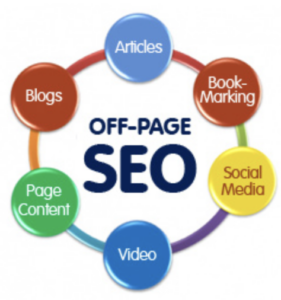
Next up, off-page SEO. Off-page SEO is anything you do outside of your website in an effort to improve search engine rankings. A main element of off-page SEO that will be referenced to a few times in this blog is link-building. In short, link-building is the process of acquiring links from other websites that link back to your own. Link-building is a way of increasing your site’s reach by exposing it to a wider audience. Furthemore, the more places one can access your website from, the greater the likelihood of visibility. Also, Google will view such links like endorsements, as if each one is a vote of confidence from a potential customer, which directly leads to higher rankings in search and therefore greater exposure and presence. In addition, off-page SEO helps to establish website authority via reputable backlinks as this signals to search engines that the website is trustworthy. A trustworthy website will rank much higher in search engine results than an untrustworthy website. This has positive and far reaching impacts for local businesses by helping them appear more often and at a higher level on search results.
In the case of off-page optimization, local SEO can actually be used as a strategy in improving off-page optimization that is also beneficial to your business’s overall local SEO. By adding your business site to local listings and internet directories, such as Yelp, Google My Business, and so on, your site is more likely to appear in local search results because of the backlinks attached to such listings and directories. An important note to make when link-building and backlinking, make sure that your business information (name, address, phone number, hours of operation) are consistent across all platforms in an effort to develop consistency and trust among users.
Concluding Insights: On-Page vs. Off-Page SEO
An additional note I’d like to make about the differences between the two is that of control. While both types of SEO serve their own purpose and are equally beneficial, on-page optimization allows for a lot more control as you are the one in charge of optimizing and modifying your webpage. Off-page optimization, on the other hand, lacks a sense of control because to a certain extent you are at the whim of others deciding to link-build with you. Do not get me wrong, there are most definitely ways to improve and even secure a certain level of off-page optimization, but not to the same degree as on-page optimization. I’d say that may be the starkest contrast between the two. In addition, please make note that while each type of SEO serves their own purpose at differing times, a combination of both on-page and off-page SEO are essential to a comprehensive and successful search engine optimization strategy.
Position Your Business on the Local Map: A Comprehensive Guide to Keyword Research as a Local Business
Picture this: you’ve finally opened the doors to your new local business. It has been a long-awaited opening and neighbors and nearby businesses are all eager for the services and goods your company has to offer. Despite the heartwarming support from the neighborhood, it translates into only a minimal influx of customers. You find yourself in need of a solution. Enter, keyword research! You may be asking yourself what in the world that means. It means your golden ticket to customer acquisition! In this blog, we will cover the basics of keyword research and how utilizing and capitalizing on keyword research will help your local business attract new customers and expand past what you thought was possible. In short, if you’re looking to attract new customers and more business through online marketing, this blog is for you!
The Basics of Keyword Research: What is it & How Does it Work?
Before jumping straight into things, let us get up to speed on exactly what keyword research is. Keyword research is the process of looking at what users are searching for and then analyzing how exactly they search for it on the internet1. Thus, this type of research is key to helping us understand the types of things people are searching for, as well as the words they are using. Keyword research is all about the “what” and the “how.” For example, if I am in need of a new computer for work, then my “what” can be identified as a computer. The next step is my “how”–how am I going to find the appropriate computer I need? Well, I would search the internet and ask Google or any other search engine what the best working laptop is. In this example, some keywords I would enter into the search engine that would produce the results I want may include the following: business computer, professional laptop, office PC, etc. If I wanted to make my search more specific and localize my search to work computers in my area, I might add the words “near me” or my city name after my main keywords. Now, in relation to one’s local business, if I know that my target audience are single-moms, for example, and my product for sale is easy-to-use strollers, I want to tailor the keywords on my website accordingly to attract their business based on their presumed search queries. For this scenario, I would consider incorporating phrases such as “single mom-friendly strollers” or “user-friendly strollers for busy moms” to resonate better with my intended audience. Moreover, incorporating location-based keywords such as “best strollers for single moms in [city name]” can further localize the search and attract customers from your immediate vicinity. This is all done using keyword research! Keyword research allows us to see all the different ways that people find products like “easy-to-use strollers.” This insight provides us with the subsequent knowledge to adjust our website and marketing keywords to align with those search queries. Ultimately, keyword research has the ability to improve all aspects of your online marketing efforts, including search engine optimization (SEO), pay per click, mobile, local, and social media2, all with the aim of increasing business.
All of this begs the question: how do I actually go about keyword research and understanding the data I need to improve my online marketing? Keyword research is really about trial and error; however, there are several useful tips and strategies that can save you from a lot of wasted time and resources.
First and foremost, you need to have good knowledge of the industry you are working in. Only then can you focus on keyword research tools. The foundational industry knowledge you possess will serve as a guide to navigating keyword research effectively. Utilize this knowledge and the needs of your target audience as a starting point for keyword research. Put yourself in the shoes of your customer–what would they type into Google to see what you offer? This brainstorming process will produce what are referred to as “seed” keywords. Seed keywords are the starting point to keyword research. This is because every keyword research tool will ask you to enter a seed keyword in order to generate a list of keyword ideas. For example, if you sell running shoes, your seed keywords may include athletic footwear, sneakers, and running shoes. You should be able to pinpoint a few seed keywords rather quickly as often they are the most obvious words associated with your product.
Next, you will begin to plug in some of your seed keywords into a keyword research tool. One great keyword research tool can be found on Ahref’s website. Google Keyword Planner is another well-known research keyword tool that is both free and somewhat user-friendly. You will be overwhelmed by the amount of results that appear; however, the data is very simple to understand. Next to each keyword will be additional data about that specific keyword, such as its volume of use. This can be a great way to gain a better understanding of the keywords that are performing well.
Furthermore, there are various additional means one can utilize for keyword research apart from online tools. Effective keyword research also includes browsing industry forums, looking at competitors and their keywords, as well as understanding your target audience. As an expert in your industry, leverage the expert knowledge you possess as it might lead you to original and new keywords. Another strategy as noted above is to identify and then observe your competitors. Look to see what keywords are driving in traffic to your competitors’ websites, and also look to see what keywords are not performing well. This is a great way to save yourself a lot of time and see what is and what isn’t already working. Moreover, choosing the right keywords for your website is a crucial step, but your job does not stop there. Next, you will want to ensure that such keywords are ubiquitous and consistent throughout your other forms of media and marketing, such as in blogs, on Facebook, LinkedIn, and other types of media and marketing. Doing so will help you establish keyword relevance and recognition for your web content.
We have previously mentioned seed keywords, but there are many other types of keywords. So not to overwhelm the reader, I will provide what I think to be the two most notable types of keywords as followed:
- Short-tail keywords
- Long-tail keywords
Short-tail keywords, also referred to as head terms, are keywords that refer to very broad and general topics. These keywords often have a high search volume, which means a lot of competition. Long-tail keywords, on the other hand, are much more specific and niche-oriented keywords that often receive much less traffic and therefore can be harder to rate highly. These keywords are much less competitive and have the aim of attracting visitors with a specific need. A great example of the difference between the two is provided by Ahref as that of a furniture store. A short-tail keyword for this topic would simply be furniture store; however, an example of a long-tail keyword for this topic may be vintage office furniture. They both have their pros and cons, but a comprehensive and effective approach to keyword research will target both short-tail and long-tail keywords.
Keyword Research and its Application to Local Search Engine Optimization (SEO)
Referred to as local SEO, local SEO is the process of optimizing your online presence to increase visibility within a particularly geographic area. Keyword research is essential for local SEO because it helps businesses attract relevant local traffic, improve their visibility in local search results, and ultimately drive more leads and sales from their target audience.
Recent studies have shown the importance of keyword research and SEO for consumer attraction, which necessitates a strategic and holistic approach to SEO–within that the need for keyword research4. More so, most peer-reviewed literature on the topic points to the identification of strong keywords and trends as highly optimal for achieving a good ranking on search engines4. How does this all relate to your local business you might be asking yourself? Well, we touched a bit upon localized keyword research previously; however, in addition to what was previously noted, it must be understood that specifically local SEO keyword research is the process of finding keywords people search for when looking for services and goods within their geographic location. This type of keyword research tells you exactly what your target customers are looking for, and if you are a local business, then this type of data will be valuable to you.
As a local business, the optimization of your keywords will help increase your organic visibility, making it easier for customers to find your business. Incorporating location-specific words, such as city names and neighborhoods, into your content will help you attract business from local customers who are searching for services within their area. Also, keyword research is a great way for local businesses to differentiate themselves from their competitors. Such insight will allow you to identify new opportunities within your business and stand apart from the rest. Overall, keyword research is crucial to effective local SEO as it helps to drive local traffic, improve business visibility online, and ultimately lead to more business.
It must be understood that keyword research is the intersection between a consumer looking for products, services, or content and the product, service, or content you have to offer. The better you understand the world of keywords and searcher intent, the more opportunities you will have to connect with consumers and expand into new markets5.
Without a strategy, you will become lost in the depths of random web pages and your website will be just one of millions. By conducting thorough keyword research as a local business, you can identify the terms and phrases that resonate most with your target audience and optimize your website content accordingly. This not only improves your organic visibility in search engine results but also enhances your chances of connecting with local consumers who are actively seeking what you have to offer. In essence, a well-executed keyword strategy is essential for maximizing your online presence locally, driving targeted traffic to your website, and ultimately achieving your business objectives.
How to Complete an SEO Audit in 10 Simple Steps

Today’s blog will cover how to conduct a Search Engine Optimization (SEO) audit in 2024 in only 10 simple steps. Let’s dive right in!
To begin, an SEO audit can be defined as a comprehensive evaluation of a website’s performance in search engine results. The process of an audit evaluates various aspects of a website that impact its performance in organic search or SEO. An SEO audit is important because it identifies any issues a site has with its SEO so one can properly address and correct the issue. If you want to get higher Google rankings, then you’ve come to the right place. I’d like to note that I cannot take full credit for the following. There are dozens of SEO audit checklists online and the following steps are an accumulation of what I think to be the most necessary and useful steps to completing a comprehensive and successful audit.
Please note, eventually there will be the need for tools to compute and analyze data. There are various tools one could use to help conduct an SEO audit; however, there are also many free and publicly available tools for use, such as Ahrefs Webmaster Tool, Google Search Console, and Google Analytics to name a few. While audit processes differ from person to person and job to job, there is a basic framework that is applicable to all. Here’s how to conduct your own SEO audit in 10 simple steps:
Summary Overview:
Step #1: Run a Crawl of Your Website (Using AWT)
Step #2: Check Your Organic Traffic & Identify Drops
Step #3: Check For Website Duplicates
Step #4: Find and Fix Indexing Issues
Step #5: Check to See if Your Site is Mobile-Friendly
Step #6: Fix Broken Links
Step #7: Ensure Proper On-Page SEO Practices
Step #8: Identify Declining Content
Step #9: Set Up Keyword Rank Tracking
Step #10: Optimize Your Website Architecture
Step #1: Run a Crawl of Your Website (Using AWT)
 Beginning an SEO audit can be somewhat intimidating. It’s also possible that given all the information, you may not know where to begin. A great place to start when conducting an audit is by running a “crawl” of your website using Ahrefs Webmaster Tool (AWT) as noted previously. This is referred to as a “crawl” because a software employs what are referred to as crawling bots to scan and analyze your website. Once your audit is complete, Ahrefs may identify dozens of issues. This complete audit by Ahrefs can give you a great place to begin your own audit if you are not sure where to start. On the other hand, sometimes the amount of issues that appear from a software-conducted audit can be overwhelming for those with limited experience. If that is the case, continue down and follow the upcoming steps for your SEO audit and circle back to step 1 if and when you are able.
Beginning an SEO audit can be somewhat intimidating. It’s also possible that given all the information, you may not know where to begin. A great place to start when conducting an audit is by running a “crawl” of your website using Ahrefs Webmaster Tool (AWT) as noted previously. This is referred to as a “crawl” because a software employs what are referred to as crawling bots to scan and analyze your website. Once your audit is complete, Ahrefs may identify dozens of issues. This complete audit by Ahrefs can give you a great place to begin your own audit if you are not sure where to start. On the other hand, sometimes the amount of issues that appear from a software-conducted audit can be overwhelming for those with limited experience. If that is the case, continue down and follow the upcoming steps for your SEO audit and circle back to step 1 if and when you are able.
Step #2: Check Your Organic Traffic & Identify Drops
 A crucial step in conducting an SEO audit is checking on your organic traffic, and if there are drops in your traffic, you need to identify their cause. Often, drops in organic traffic can be due to changes in Google’s algorithm. Google is constantly updating their search algorithms and very rarely will notify users of such updates; therefore, steps like this are essential to ensuring you are up to date with all of Google’s updates. Another common reason for drops in organic traffic may be due to manual action. Manual action, or Google Penalty, is action taken against a website by a human reviewer. Manual actions can result in demotions and they may be the reason for decreased or stagnant organic traffic. I should note that manual action is a pretty severe consequence that only really happens if something is drastically wrong, but it is always good to check to make sure that it was not the issue. To observe your organic traffic data, you can utilize Google Analytics to see how much traffic your site is receiving. Once completed, you can plug your site URL in Ahref’s Site Explorer to see new Google updates and when they occurred. You can then check to see if the drop in your traffic and the Google updates align at all.
A crucial step in conducting an SEO audit is checking on your organic traffic, and if there are drops in your traffic, you need to identify their cause. Often, drops in organic traffic can be due to changes in Google’s algorithm. Google is constantly updating their search algorithms and very rarely will notify users of such updates; therefore, steps like this are essential to ensuring you are up to date with all of Google’s updates. Another common reason for drops in organic traffic may be due to manual action. Manual action, or Google Penalty, is action taken against a website by a human reviewer. Manual actions can result in demotions and they may be the reason for decreased or stagnant organic traffic. I should note that manual action is a pretty severe consequence that only really happens if something is drastically wrong, but it is always good to check to make sure that it was not the issue. To observe your organic traffic data, you can utilize Google Analytics to see how much traffic your site is receiving. Once completed, you can plug your site URL in Ahref’s Site Explorer to see new Google updates and when they occurred. You can then check to see if the drop in your traffic and the Google updates align at all.
Step #3: Check for Website Duplicates

Believe it or not, you may have different versions of your website indexed by Google. Visitors should only be able to access your site from one link and one link only. If your website link is accessible from more than one link or from an unsecure link, there is most definitely an issue that needs to be corrected. Google will actually see multiple links to one site as different sites all together. In extreme cases, this issue may even negatively impact your Google ranking.
Step #4: Find and Fix Indexing Issues
For this step, Google Search Console will be a great tool to find web pages that Google is not indexing. What does that mean exactly? Well, google search results come from one large index, which is a large database of countless web pages. Your website page needs to be in this index to have any chance of ranking. Indexing issues can become a bit complicated. If an error pops up on Google Search Console, you can get more information and see if that issue is related to indexing. If so, you will have to remove or edit the meta robots tag–this is where it can get a bit complicated.
Step #5: Check to See if Your Site is Mobile-Friendly
 Most people do anything and everything from their phone nowadays, which includes Google searches. In fact, over 60% of searches now come from phones3. Thus, it is important that your site is mobile-friendly as well. What do I mean by that? Well, your site needs to read just as easily on a tiny phone screen as on a computer screen, as well as being just as easily navigable. This has actually been a Google ranking factor since 2019, meaning Google will actually demote your website if it is not mobile-friendly! Google has a free Mobile Friendly Test Tool that you can insert your URL into and the tool will confirm if your site is mobile-friendly or not. If not, make the necessary changes.
Most people do anything and everything from their phone nowadays, which includes Google searches. In fact, over 60% of searches now come from phones3. Thus, it is important that your site is mobile-friendly as well. What do I mean by that? Well, your site needs to read just as easily on a tiny phone screen as on a computer screen, as well as being just as easily navigable. This has actually been a Google ranking factor since 2019, meaning Google will actually demote your website if it is not mobile-friendly! Google has a free Mobile Friendly Test Tool that you can insert your URL into and the tool will confirm if your site is mobile-friendly or not. If not, make the necessary changes.
Step #6: Fix Broken Pages
Having broken pages on your site is never a good thing. Worse, if these broken pages have backlinks, then they are simply a waste of a link leading to nothing. No one wants to open a link and receive a 404 error message. Broken pages lead to a negative customer experience and can hurt your SEO. If the broken page does contain backlinks, redirect or update the link. If the broken page was accidentally deleted, reinstate it. Once identified, broken pages are quick and easy to fix.
One way to discover broken pages is by visiting Google Search Console under Google’s Index report. If your pages are broken, you will receive a 404 error when entering the URL into the system. In Site Explorer, you can also identify broken URLs that have backlinks. Simply enter your domain, navigate to the “Best by links” report, and apply a “404 not found” filter. Then, arrange the report by referring to domains in descending order.
Step #7: Ensure Proper On-Page SEO Practices
 Every indexable page on your website needs to have the following on-page data: title tag, meta description, and H1 tag. In this step, a tool such as Site Audit is necessary. The software will deliver you a report stating if you have any of the necessary on-page information missing. This step can be a bit complicated as depending on their size, certain issues within this step may mean an error within the coding of the website, which calls for a much larger solution.
Every indexable page on your website needs to have the following on-page data: title tag, meta description, and H1 tag. In this step, a tool such as Site Audit is necessary. The software will deliver you a report stating if you have any of the necessary on-page information missing. This step can be a bit complicated as depending on their size, certain issues within this step may mean an error within the coding of the website, which calls for a much larger solution.
Step #8: Identify Declining Content
Unfortunately, content, no matter how great it is, will not last forever. Eventually you will have to update and improve upon your existing content. Part of good SEO practices, so to speak, is to constantly monitor your content to ensure optimal performance. Once content becomes old or outdated, traffic slows naturally, but good news! Usually a quick face-lift will resurrect rankings. Google Search Console offers a quick and easy way to view your traffic history. This tool can show you your last 6 months of traffic ratings and where you may need to improve.
Step #9: Set Up Keyword Rank Tracking
![]()
Setting up some sort of system to track your keyword rank can prove very useful. One step further than that is actually tracking the keyword rank of your competitors. There may be high-ranking keywords your competitors use that you don’t–this can be referred to as a content gap. A great way to find this out is through Site Explorer. Paste your URL into Site Explorer and navigate to the content gap selection. Proceed to paste the URL of your competitor into the following open bar and then press keywords. You’ll then see a clear depiction of your keywords versus theirs, as well as the ranking of each. This is an excellent tool to improve your keyword ranking.
Step #10: Optimize Your Website Architecture
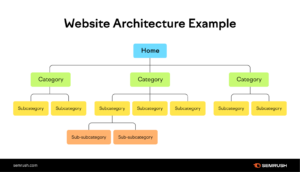
In essence, your site should please two different parties: Google and the intended audience. Thus, if you make information difficult for Google or your users to find and/or understand, Google will punish you by demoting your ranking. Therefore, check that your website architecture and structure is optimal–this is a key factor that will most definitely affect your SEO. See the photo example above of website architecture from SEMRush.
I’d like to emphasize the importance of working smarter, not harder, when conducting an SEO audit. I know that some of the aforementioned tools can be tricky to navigate but they offer a world of knowledge. A lot of these tools will identify all of the issues for you! Use that to your advantage so that you can spend more time actually fixing the issues than you do trying to find them. By leveraging the capabilities of these tools, you can streamline your audit process and maximize your productivity. Focus on prioritizing the most critical issues first, and utilize the insights provided by the tools to make informed decisions about where to allocate your time and resources. Ultimately, working smarter not only accelerates the audit process but also ensures that you can effectively address any issues that may be impacting your website’s performance in search engine results.
Mastering Local SEO: A Comprehensive Strategy Guide
Mastering Local SEO: A Comprehensive Strategy Guide

Attention all entrepreneurs and local business owners! Are you looking to transform your online presence and be the go-to choice for customers in your area? If so, look no further than local Search Engine Optimization (SEO). In this blog, get ready to immerse yourself in the dynamic world of local SEO, where we’ll explore every facet of this game-changing strategy.
Let’s walk through the different steps and tips necessary to master this transformative tactic to revolutionize your business’s online visibility and attract a steady stream of local customers. From optimizing your keywords and marketing to crafting compelling localized content, we’ll cover it all!
Step 1: Grasping the Concept
 First things first, a lack of comprehensive understanding of the concept itself is bound to put a damper on your revolutionary plans. So let’s make sure we all have a clear and concise understanding of the concept: Local SEO is the practice of optimizing a business’s online presence to improve its visibility in local search results.
First things first, a lack of comprehensive understanding of the concept itself is bound to put a damper on your revolutionary plans. So let’s make sure we all have a clear and concise understanding of the concept: Local SEO is the practice of optimizing a business’s online presence to improve its visibility in local search results.
While search results can come up on any search engine, SEO and local SEO focuses on the optimization of Google search results in specific. If you are familiar at all with SEO, you may be asking yourself how “regular” SEO and local SEO differ. The distinction is both simple and clear.
Local SEO is a more specific and narrowed type of search engine optimization that operates within a specific geographic setting, whereas regular SEO simply aims to improve online presence in general and is not specific to locality1.
Local SEO can appear as a search engine result through two different means: map pack results and blue ink results. While these terms may sound foreign, we encounter and use these two exact result types almost every day. The Google Map Pack, also referred to as the local pack, is a common feature in Google’s search engine results (SERP) that showcases a short list of the top local businesses relevant to the user’s search query or question. Be sure to visit our site here and learn more about the ever-evolving nature of Local SEO.
You can see an example of a Google map pack displayed below.

Appearing at the very top of Google search engine results, this is a typical search result we all receive when we search for goods or services “near me.” Google will present the user with a map interface that has map pinpoints correlating to highlighted businesses that match our search query, including the business name and location, their reviews, as well as their contact information.
This allows users to quickly find and identify where businesses are in relation to their location, as well as facilitate engagement with local businesses–a crucial feature in businesses trying to improve local search results and drive local traffic.
The other type of search result that will appear when searching on Google for local businesses is the regular, organic blue link, also known as “10 blue links.” The phrase “10 blue links” is an expression in the world of SEO used to refer to the traditional format of search engine results. These are the typical 10 blue links that we are used to seeing when plugging a query into Google.
While SERPs have evolved to include additional features like videos and pictures, the basic format of the 10 blue links remains the same. Google Map Pick and blue links are the most common way Google will facilitate an increased presence for local businesses.
Step 2: Understanding the Impact
Your efforts will only be as great as your ambition. Thus, properly understanding the intrinsic and profound impact local SEO will have on your business is a crucial step in propelling you and your business forward toward success.
The importance behind local SEO is short and simple, yet its significance should not be underestimated. Local SEO is an essential part of helping increase business visibility, making it easier for potential customers in the area to find your business. Additionally, the optimization of local keywords makes local businesses highly attractive to the intended audience.
While the main effect of local SEO is to increase the visibility and traffic of a business via their online marketing efforts, local SEO can be an advantageous tool in differentiating yourself from competitors.
Specifically, smaller local businesses are able to stand apart from large corporations. Furthermore, local SEO primarily generates what is commonly known as organic traffic. Organic traffic has been demonstrated to boast a significantly higher conversion rate compared to other marketing approaches, such as pay-per-click advertising. Essentially, when users come across a local business that addresses their needs, they are far more likely to convert into customers than with alternative marketing methods.
Also, the nature of local SEO practices ensure that business information is up-to-date and consistent among all online platforms, improving the customer experience. As mentioned earlier, it’s evident that local SEO offers significant advantages for brick-and-mortar businesses by attracting foot traffic, thereby boosting sales and overall revenue.
In short, any business that has a physical location or serves a geographic area can benefit greatly from local SEO. Enhancing your local SEO impacts the relevancy, prominence, and link popularity factors of your website within your specific geographic area.
By optimizing the appropriate elements of your site’s digital presence for local searches, your website can achieve higher rankings in a broader range of local search results.
Step 3: Preparing to Launch!
Local search engine optimization requires a thoughtful and holistic strategy to be effective, including content planning, market planning, web analytics, and business analytics2. This strategy should be developed as soon as possible as it has an effect on the entirety of site development, site content, architecture, as well as the content management system (CMS). Furthermore, there are many factors to take into consideration when developing a local SEO strategy, including the following:
- Revenue and business model: Think about the main purpose of your business. What is your end goal and is that communicated effectively to your audience? Are you selling products or services?
- Target audience: Who are your target customers? Who is trying to be reached? Age group, gender, or specific group? Are your products and/or services well marketed to the needs of your target audience?
- Competitors: One needs to be familiar with their competitive landscape, including knowing competitors and their digital marketing strategies. You may be able to leverage what is or is not working for your competitors and use it for your own strategy and SEO landscape.
- Content development: Putting out good, quality content plays a pivotal role in attracting new viewers to your website.
- Keyword Research: Understanding the needs of your target audience and how they search for those needs is a crucial step in developing your local SEO strategy. Does your website meet the search criteria of your target audience?
If you are delving into the world of local SEO, it is best that you get yourself acquainted with some of the above terms as you will hear them mentioned over and over again. More so, if you are able to answer the above noted questions, congratulations! You are now one step closer to developing and implementing your local SEO strategy.
Next in the development of your local SEO strategy is to take action! It can be overwhelming to begin, but to some extent, the only way you’re going to see progress is by starting.
The world of SEO is constantly changing so your local SEO strategy will inevitably be tweaked and changed, more than once. There are, however, some things you can look out for and work on integrating into your local SEO strategy to reduce potential errors. To foster trustworthiness and transparency, make sure that your Google My Business listing is updated regularly with all the necessary information (business name, address, hours of operation, contact information, etc.).3
Encourage customers to leave reviews on your site as another way to improve credibility. Your strategy should also include keyword research, optimizing the relevant local keywords to align with user search queries. I’d suggest reading more about keyword research as it should be a crucial part of your strategy, and effective keyword research can unlock immense potential for your business.
Moreover, utilizing tools such as link-building and optimizing localized content presents excellent methods for drawing organic traffic to your website. Localized content, including blog posts, articles, and event promotions, captures and engages the interest of customers.
Similarly, link-building fosters relationships with neighboring businesses, organizations, and influencers to secure backlinks, enhancing your website’s credibility and reliability. As noted previously, the world of SEO is constantly changing so continue to monitor and analyze your website performance to identify areas of needed improvement. A strong local SEO performance is crucial to driving local business and standing apart from competitors,and by default, a sound local SEO strategy is also needed.
Step 4: Implementing Tips & Tricks
The aforementioned may seem slightly overwhelming, so I’d like to emphasize and reemphasize a few tips and tricks that anyone without any prior SEO experience can do to improve the ranking and visibility of their local business.
Maybe you’re a local plumber, perhaps a family-owned flower shop or maybe you own a mobile pet cleaning service, whatever your business may be, these seemingly small tips can help anyone boost their local SEO performance.
This may seem like common sense but keep your information up to date and easily accessible. I cannot emphasize this enough. In today’s fast-paced world, people expect results immediately. If it takes a user more than 45 seconds to locate your business address, phone number, and operating hours, you risk losing their interest and potential business.
Therefore, it’s crucial to regularly update and maintain accurate information about your business–this is something everyone and anyone can do!
Another simple tip that anyone can implement is to actively encourage customers to leave reviews.
When customers do leave reviews, take the time to thoughtfully respond regardless if the feedback is positive or negative. Reviews are a great way to connect and build relationships with your current customers, as well as build trust with new customers. By asking customers to share their experiences, you can not only boost your credibility and reputation but also improve your visibility in local search results. Read more here about why reviews are so important for your business.
Moreover, as a local business, make an effort to build genuine relationships with other businesses in your area. One should not underestimate the power of word of mouth. It is a free and reliable way to market your business.
More so, you can ask surrounding businesses to link your website to their site so that it is exposed to a larger audience–and you can do the same for them! I should note, when it comes to link-building like this, being within the same industry usually bares the most effective results.
For instance, if you’re a plumber, forming a connection with a local hardware store can yield excellent results.
Do not be discouraged if you first fail. It takes professionals about 6 months to a year (if not more) to yield real results from local SEO practices just to give you a timeline idea. Remember, local SEO is an ongoing process that requires patience, consistency, and dedication, but the rewards of increased visibility, customer engagement, and business growth make it well worth the effort. So, take the first step today and start optimizing your local SEO!



